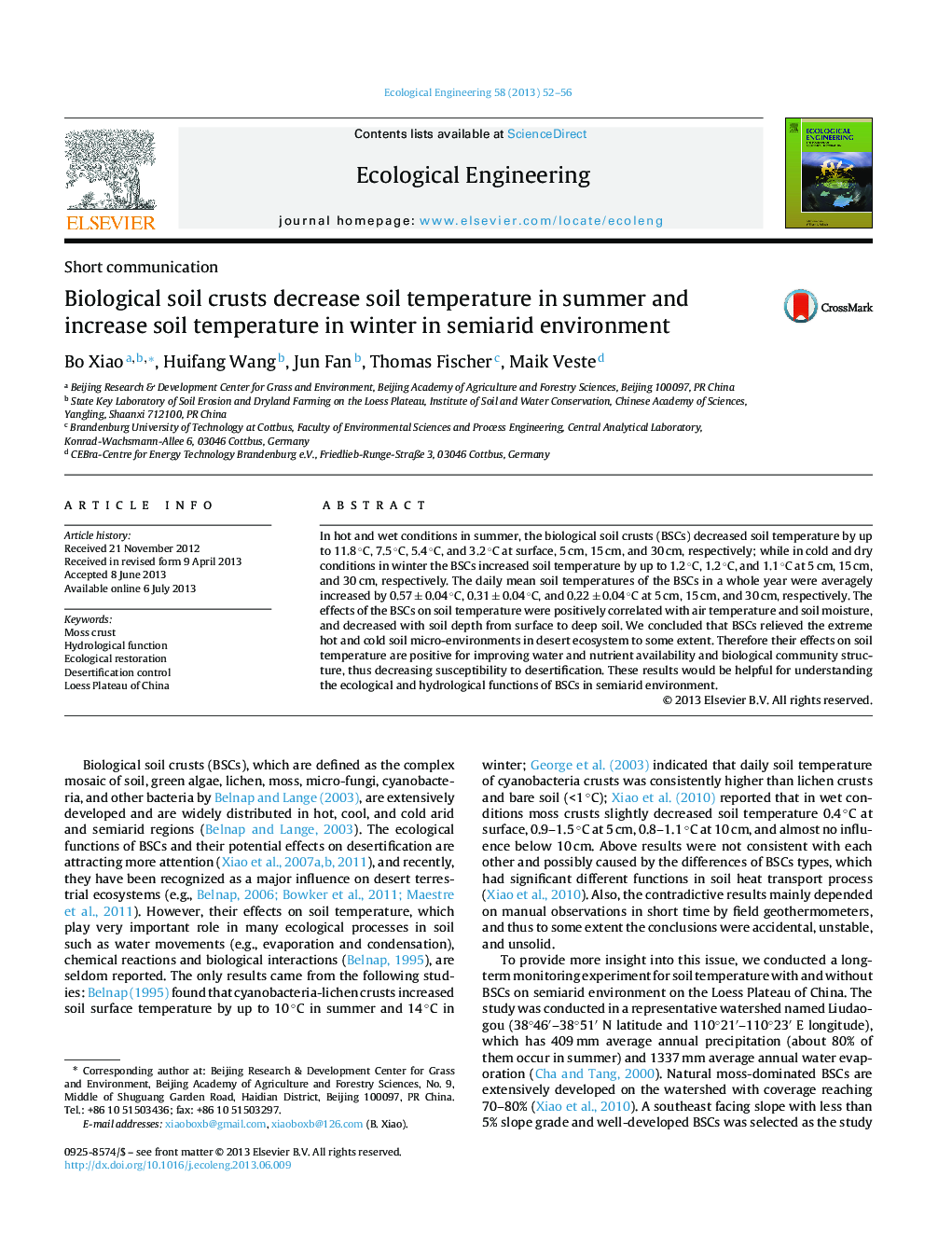| Article ID | Journal | Published Year | Pages | File Type |
|---|---|---|---|---|
| 6302471 | Ecological Engineering | 2013 | 5 Pages |
Abstract
In hot and wet conditions in summer, the biological soil crusts (BSCs) decreased soil temperature by up to 11.8 °C, 7.5 °C, 5.4 °C, and 3.2 °C at surface, 5 cm, 15 cm, and 30 cm, respectively; while in cold and dry conditions in winter the BSCs increased soil temperature by up to 1.2 °C, 1.2 °C, and 1.1 °C at 5 cm, 15 cm, and 30 cm, respectively. The daily mean soil temperatures of the BSCs in a whole year were averagely increased by 0.57 ± 0.04 °C, 0.31 ± 0.04 °C, and 0.22 ± 0.04 °C at 5 cm, 15 cm, and 30 cm, respectively. The effects of the BSCs on soil temperature were positively correlated with air temperature and soil moisture, and decreased with soil depth from surface to deep soil. We concluded that BSCs relieved the extreme hot and cold soil micro-environments in desert ecosystem to some extent. Therefore their effects on soil temperature are positive for improving water and nutrient availability and biological community structure, thus decreasing susceptibility to desertification. These results would be helpful for understanding the ecological and hydrological functions of BSCs in semiarid environment.
Related Topics
Life Sciences
Agricultural and Biological Sciences
Ecology, Evolution, Behavior and Systematics
Authors
Bo Xiao, Huifang Wang, Jun Fan, Thomas Fischer, Maik Veste,
